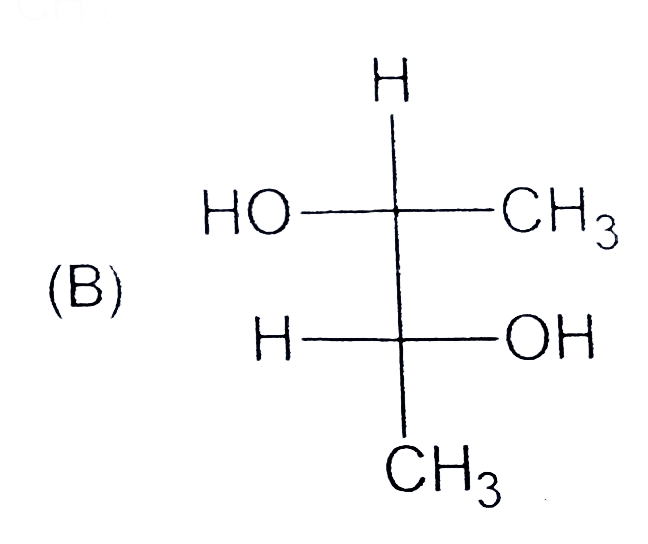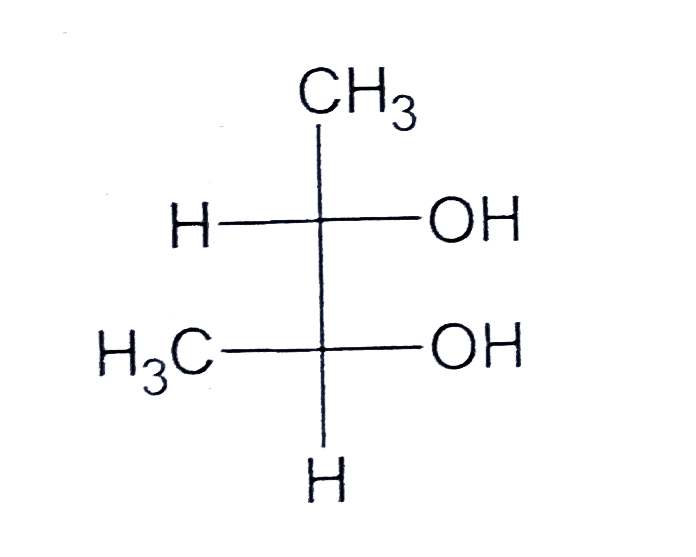State whether the following statements are true or false.
a. D and L stereoisomers are enantiomers.
b. D enantiomer rotates the plane-polarised light to the right and L enantiomer to the left.
c. Conversion of an erythro to a threo stereoisomer always occur by inversion at one chiral C.
d. A racemate can be distinguished from a meso or a chiral compound by an attempted resolution.
e. Racemisation of an enantiomer can only occure by breaking of at least one bond to the chiral centre.
f. A reaction catalysed by an enzyme always gives an O.A product.
g. When an achiral molecule reacts to give achiral molecule, the product is always racemic
h. In chemical reactions, the change from an S reactant to an R product always signals an inversion of configuraion.
i. An optically inactive substance must be achiral.
j. An achiral compound can have chiral centres.
K. A compound with S configuration is the (−) enantiomer.
Video Solution
Text Solution
a. F: necessarily. This statement is true only for a compound with one chiral C but not for more than one C atom. For example

b. F: The terms D and L do not refer to sign of rotation. They refer to the configuration of stereoisomer relative to that of D glyceraldehyde.
c. T: Changing the configuration at one of the chiral centres converts one diastereomer to the other.
d. T: Unlike a racemate, meso and chiral compounds cannot be resolved beacuse they do not consist of enantiomers.
e. T: Only by breaking a bond the configuration can be changed. f. F: The product could be meso or achiral.
g. F : If an optically active achiral coreactant, solvent, or catalyst such as enzyme is used, the product is likely to be O.A.
h. F: The priority sequence of ligands may change.
i. F: The racemate shows no optical activity.
j.T: For example, meso compound
k. F: Sign of rotation is not related to the configuration.
|
Topper's Solved these Questions
- ISOMERISMBook:CENGAGE CHEMISTRYChapter:ISOMERISMExercise:Exercise
Explore 19 Videos
- ISOMERISMBook:CENGAGE CHEMISTRYChapter:ISOMERISMExercise:(Linked Comprehension Type)Exercise
Explore 14 Videos
- ISOMERISMBook:CENGAGE CHEMISTRYChapter:ISOMERISMExercise:Assertion-Reasoning Type
Explore 1 Video
- IONIC EQUILIBRIUMBook:CENGAGE CHEMISTRYChapter:IONIC EQUILIBRIUMExercise:Archives Subjective
Explore 28 Videos
- NCERT BASED EXERCISEBook:CENGAGE CHEMISTRYChapter:NCERT BASED EXERCISEExercise:Chemical Equilibrium
Explore 72 Videos
Similar Questions
Knowledge Check
Enantiomers are
Amolecule that have at least one chiral carbonBnon-superimposible molecules that are mirror images of one anotherCnon-superimposible constitutional isomersDnon-superimposible moleculesWhich of the following statements is not true about enantiomers
AThey have same physical propertiesBThey have different biological propertiesCThey have same chemical properties towards chiral compoundsDNone of theseWhich of the following is enantiomer of
 A
A B
B C
C D
D
Which of the followings represent enantiomer ?
View SolutionWhich of the following is the enantiomer of the compound shown below ?

View SolutionThe following represents a pair of enantiomers:
View SolutionAn enantiomer and its racemic form have
View SolutionSelect the compound being capable of resolution into enantiomers?
View Solution

